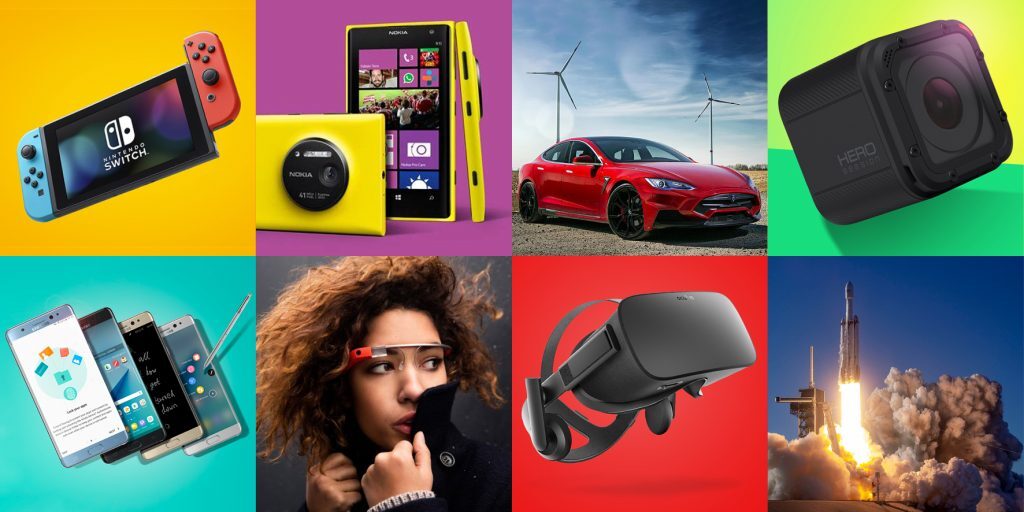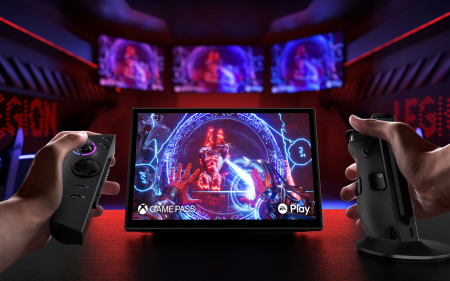2019 is drawing to a close and that means there’s another decade about to end. Depending on who you ask. Let’s not go there, we’ve had that argument once already in the Stuff offices. So, for the purposes of not arguing, there’s another decade about to end. Which is a perfect time to look back at all the things that made it a decade. In tech, anyway.
And that’s just what we’ve got here — a look back at thirty pieces of tech launched in the past decade that somehow defined it. Maybe it laid the groundwork for something better. Maybe it laid the groundwork for something worse. Maybe it just really really impressed us (in which case, it probably launched between 2012 and 2013). Regardless, it’s all here and it’s all awesome, in its own way. Here’s what the last decade was made of.
Apple iPhone 4 – 2010
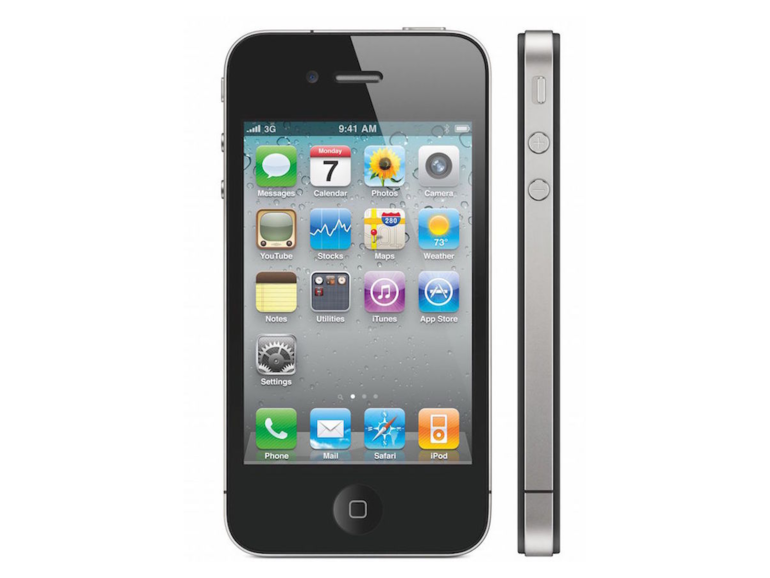 Apple’s iPhone has been credited with kickstarting the mass popularity of smartphones (yes, we know there were earlier versions of the smartphone, no, nobody managed to market them quite like Apple). But it was the iPhone 4, which opened the decade we’re now closing out, that really managed to set the tone for the company’s handheld devices. For a few reasons: It’s the device responsible for the “You’re holding it wrong” meme. Yup, AntennaeGate. It’s famously the device an Apple engineer lost in a bar (where it was found and sent to a journalist). And it was a pretty darned good smartphone, to boot.
Apple’s iPhone has been credited with kickstarting the mass popularity of smartphones (yes, we know there were earlier versions of the smartphone, no, nobody managed to market them quite like Apple). But it was the iPhone 4, which opened the decade we’re now closing out, that really managed to set the tone for the company’s handheld devices. For a few reasons: It’s the device responsible for the “You’re holding it wrong” meme. Yup, AntennaeGate. It’s famously the device an Apple engineer lost in a bar (where it was found and sent to a journalist). And it was a pretty darned good smartphone, to boot.
Apple iPad – 2010
 Nowadays, if you say the word ‘tablet’, the image that comes to mind was conceived in an Apple back-room. It may be easy to forget a time when a tablet was something you took when you woke up, not an item you reached for so you could watch something on a smaller screen because the stuff on the larger screen is being annoying. The spec, from the 768 x 1,024 display to the Apple A4 processor, is laughable today but the 9.7 slate was the precursor to the wide range of tablets we have today. Though, in keeping with its desirability at launch, most everyone still wants one made by Apple.
Nowadays, if you say the word ‘tablet’, the image that comes to mind was conceived in an Apple back-room. It may be easy to forget a time when a tablet was something you took when you woke up, not an item you reached for so you could watch something on a smaller screen because the stuff on the larger screen is being annoying. The spec, from the 768 x 1,024 display to the Apple A4 processor, is laughable today but the 9.7 slate was the precursor to the wide range of tablets we have today. Though, in keeping with its desirability at launch, most everyone still wants one made by Apple.
Microsoft Kinect – 2010
 Here’s a technology that’s… well, it’s still around, actually. But, like someone posting their ‘decade’ pics on Facebook, it looks a little different now. Originally launched as a body-sensing motion controller for the Xbox 360, the Kinect morphed into a Windows peripheral (with added engineering applications) before coming out with a second gaming iteration that almost sank the Xbox One. All because we weren’t ready for devices that listen to you all the time (also, Microsoft said they were gonna use it to watch how we respond to ads — Facebook’s gone and done that now). There are still at least a few Kinect units trundling along and it lives on in another guise as well. Kinda. You know the Hololens?
Here’s a technology that’s… well, it’s still around, actually. But, like someone posting their ‘decade’ pics on Facebook, it looks a little different now. Originally launched as a body-sensing motion controller for the Xbox 360, the Kinect morphed into a Windows peripheral (with added engineering applications) before coming out with a second gaming iteration that almost sank the Xbox One. All because we weren’t ready for devices that listen to you all the time (also, Microsoft said they were gonna use it to watch how we respond to ads — Facebook’s gone and done that now). There are still at least a few Kinect units trundling along and it lives on in another guise as well. Kinda. You know the Hololens?
Nintendo 3DS – 2011
 If there was any doubt about who was winning the handheld gaming wars, Nintendo came along and squashed them with the release of its 3DS handheld. Yeah, the initial unit’s battery could have been better but it had functional, glasses-less 3D effects — even if only a few games really made use of them. Those games, by the way, included Resident Evil Revelations, Metal Gear Solid 3D, and any first-party Ninty titles for the handheld. The console was followed by the 2DS, upgraded and oversized versions of the console as well as, finally, the Switch.
If there was any doubt about who was winning the handheld gaming wars, Nintendo came along and squashed them with the release of its 3DS handheld. Yeah, the initial unit’s battery could have been better but it had functional, glasses-less 3D effects — even if only a few games really made use of them. Those games, by the way, included Resident Evil Revelations, Metal Gear Solid 3D, and any first-party Ninty titles for the handheld. The console was followed by the 2DS, upgraded and oversized versions of the console as well as, finally, the Switch.
Samsung Galaxy Note – 2011
 This is the handset that started our love affair with oversized smartphones, though at launch Samsung’s Galaxy Note N7000 was just 5.3in in size. Successive models quickly grew to the dimensions we now consider ‘normal’ but, to be fair, this was a little oversized in its day as well. The stylus was present, way back in 2011, as were a stately 1GB of RAM, 16 or 32GB of storage, Android Jelly Bean and an 8MP main camera. Now, these specs would disgrace all but the most budget of entry-level smartphones.
This is the handset that started our love affair with oversized smartphones, though at launch Samsung’s Galaxy Note N7000 was just 5.3in in size. Successive models quickly grew to the dimensions we now consider ‘normal’ but, to be fair, this was a little oversized in its day as well. The stylus was present, way back in 2011, as were a stately 1GB of RAM, 16 or 32GB of storage, Android Jelly Bean and an 8MP main camera. Now, these specs would disgrace all but the most budget of entry-level smartphones.
Sphero – 2011
 We could have used an image of the original Sphero here but South African audiences may not recognise it if it’s not dressed in its Star Wars cosplay. That said, the little remote-controlled orb really was a clever piece of tech in its own right, even if it needed a (slight) hand from Disney to really bring it to prominence. Now the basic robotics kit is extended to more than just clever orbs — the company makes a remote-controlled Artoo, among other clever additions to the family.
We could have used an image of the original Sphero here but South African audiences may not recognise it if it’s not dressed in its Star Wars cosplay. That said, the little remote-controlled orb really was a clever piece of tech in its own right, even if it needed a (slight) hand from Disney to really bring it to prominence. Now the basic robotics kit is extended to more than just clever orbs — the company makes a remote-controlled Artoo, among other clever additions to the family.
Amazon Kindle Paperwhite – 2012
 We’ve long been fans of Amazon’s Kindle but the company really kicked things up a notch or seventeen with the introduction of the Paperwhite. Instead of just offering readers e-ink paper and a literal library in their hands, Amazon’s newest (for the time) reader became the perfect reader’s tool — a book with a built-in reading light. One with adjustable levels of lighting, so one could cheerfully while away the night while their partner catches up on their rest. Pity, it took so long for the next innovation — adding waterproofing so we could read (safely) in the bath.
We’ve long been fans of Amazon’s Kindle but the company really kicked things up a notch or seventeen with the introduction of the Paperwhite. Instead of just offering readers e-ink paper and a literal library in their hands, Amazon’s newest (for the time) reader became the perfect reader’s tool — a book with a built-in reading light. One with adjustable levels of lighting, so one could cheerfully while away the night while their partner catches up on their rest. Pity, it took so long for the next innovation — adding waterproofing so we could read (safely) in the bath.
SpaceX Grasshopper – 2012
 Welcome to the future. We’ve got commercial spaceflight now, and reusable rockets. Those things wouldn’t have been possible without Elon Musk, SpaceX and the Grasshopper, which began testing in 2012. We recall following along with the testing back when those boosters were just hopping off the launch pad and back again. At the time, being able to launch and land vertically was exciting in and of itself. Now, they’re lofting rockets to the ISS before touching down on both land and sea. Who are we kidding, it’s still pretty flippin’ exciting.
Welcome to the future. We’ve got commercial spaceflight now, and reusable rockets. Those things wouldn’t have been possible without Elon Musk, SpaceX and the Grasshopper, which began testing in 2012. We recall following along with the testing back when those boosters were just hopping off the launch pad and back again. At the time, being able to launch and land vertically was exciting in and of itself. Now, they’re lofting rockets to the ISS before touching down on both land and sea. Who are we kidding, it’s still pretty flippin’ exciting.
Oculus Rift – 2012
 It’s taken a fair amount of time for VR to get to the point where it is now: not quite everywhere, but in more places than before. The major push came from the Oculus Rift, which was being crowdfunded back in 2012. Before Facebook and preposterous amounts of money being paid for the company, it was a bunch of nerds on the internet excited by the prospect of accessible VR. Those nerds are still excited, though perhaps less so at the idea of Facebook watching them watch… whatever it is they happen to be watching. Still, we wouldn’t be here today if not for the Oculus Rift’s headline-grabbing back in the day.
It’s taken a fair amount of time for VR to get to the point where it is now: not quite everywhere, but in more places than before. The major push came from the Oculus Rift, which was being crowdfunded back in 2012. Before Facebook and preposterous amounts of money being paid for the company, it was a bunch of nerds on the internet excited by the prospect of accessible VR. Those nerds are still excited, though perhaps less so at the idea of Facebook watching them watch… whatever it is they happen to be watching. Still, we wouldn’t be here today if not for the Oculus Rift’s headline-grabbing back in the day.
DStv Walka – 2012
 We’re not sure how much you remember of DStv’s antics back at the beginning of the decade but the DStv Walka was totally a thing. An offshoot of DSTv mobile, these were teeny little portable TVs that predated streaming in SA. We’re aware they existed, and we even gave a few away, but we never spent a whole lot of time with them. Based on the fact that the whole product lineup has vanished from memory, not that many people did. But we couldn’t look back on this past decade without pointing this tech out for the benefit of kids who can’t picture a world without decent streaming. Cos this, right here, is what that world looks like.
We’re not sure how much you remember of DStv’s antics back at the beginning of the decade but the DStv Walka was totally a thing. An offshoot of DSTv mobile, these were teeny little portable TVs that predated streaming in SA. We’re aware they existed, and we even gave a few away, but we never spent a whole lot of time with them. Based on the fact that the whole product lineup has vanished from memory, not that many people did. But we couldn’t look back on this past decade without pointing this tech out for the benefit of kids who can’t picture a world without decent streaming. Cos this, right here, is what that world looks like.
MakerBot Replicator – 2012
 3D printers aren’t that new. As a concept, they’ve been around at least 1966 (which is when the original Star Trek turned up). As practical, affordable devices? We’re gonna argue that 2012 was the year that happened. Not for South Africans, so much, but certainly for the rest of the world. That was the year MakerBot’s $2,000 (R29,000 or so at today’s exchange rates) Replicator hit the market. You too could own a machine capable of painstakingly recreating a plastic doodad you coulda bought online for far less than the sum you just spent making it. Now? Now you can buy 3D printers at retail in SA.
3D printers aren’t that new. As a concept, they’ve been around at least 1966 (which is when the original Star Trek turned up). As practical, affordable devices? We’re gonna argue that 2012 was the year that happened. Not for South Africans, so much, but certainly for the rest of the world. That was the year MakerBot’s $2,000 (R29,000 or so at today’s exchange rates) Replicator hit the market. You too could own a machine capable of painstakingly recreating a plastic doodad you coulda bought online for far less than the sum you just spent making it. Now? Now you can buy 3D printers at retail in SA.
Fujifilm X-Pro1 – 2012
 If you take a look around today’s camera battlegrounds, those fields were first sown near the beginning of the decade. Fuji’s X-Pro1 was one of the first seeds, setting up what was to follow. Namely, a whole mess of retro-styled mirrorless cameras incorporating physical controls and in-built tech. This particular model arrived with a hybrid viewfinder system, letting users opt for either optical or electronic viewfinders. It wasn’t perfect but it was also launched seven years ago. Camera tech has leapt and bound in the intervening time. And, well, here we are — just about to jump into 2020 with both feet.
If you take a look around today’s camera battlegrounds, those fields were first sown near the beginning of the decade. Fuji’s X-Pro1 was one of the first seeds, setting up what was to follow. Namely, a whole mess of retro-styled mirrorless cameras incorporating physical controls and in-built tech. This particular model arrived with a hybrid viewfinder system, letting users opt for either optical or electronic viewfinders. It wasn’t perfect but it was also launched seven years ago. Camera tech has leapt and bound in the intervening time. And, well, here we are — just about to jump into 2020 with both feet.
Fujifilm Instax Mini 8 – 2012
 Since we’re on the subject, 2012 was also a prime year for retro camera tech. Proving the 70s (the 1970s, that is) never really went away, Fuji’s Instax Mini 8 launched that year. And it’s stuck around, proving popular even today — though you can also opt for an Instax Mini 9 now if you really want to. Basically low-tech back then, newer models (and various photo printers) are now available to those who don’t really see the artistry in ‘mistakes’. The film’s the same for all of it so, really, it’s just a case of whatever floats your goat.
Since we’re on the subject, 2012 was also a prime year for retro camera tech. Proving the 70s (the 1970s, that is) never really went away, Fuji’s Instax Mini 8 launched that year. And it’s stuck around, proving popular even today — though you can also opt for an Instax Mini 9 now if you really want to. Basically low-tech back then, newer models (and various photo printers) are now available to those who don’t really see the artistry in ‘mistakes’. The film’s the same for all of it so, really, it’s just a case of whatever floats your goat.
Tesla Model S – 2012
 Tesla’s not even in South Africa and we’re huge fans anyway. That’s saying something, for the brand and its tech. The Tesla Model S was first introduced to the world in 2012 and, honestly, we’d still buy one today if they were available here. And not just because they work as emergency boats in case of flash flooding. There have been better vehicles added to the lineup since but since we can’t have those yet either, we’re just going to keep pining for… well, for all of them.
Tesla’s not even in South Africa and we’re huge fans anyway. That’s saying something, for the brand and its tech. The Tesla Model S was first introduced to the world in 2012 and, honestly, we’d still buy one today if they were available here. And not just because they work as emergency boats in case of flash flooding. There have been better vehicles added to the lineup since but since we can’t have those yet either, we’re just going to keep pining for… well, for all of them.
LG OLED TVs – 2012
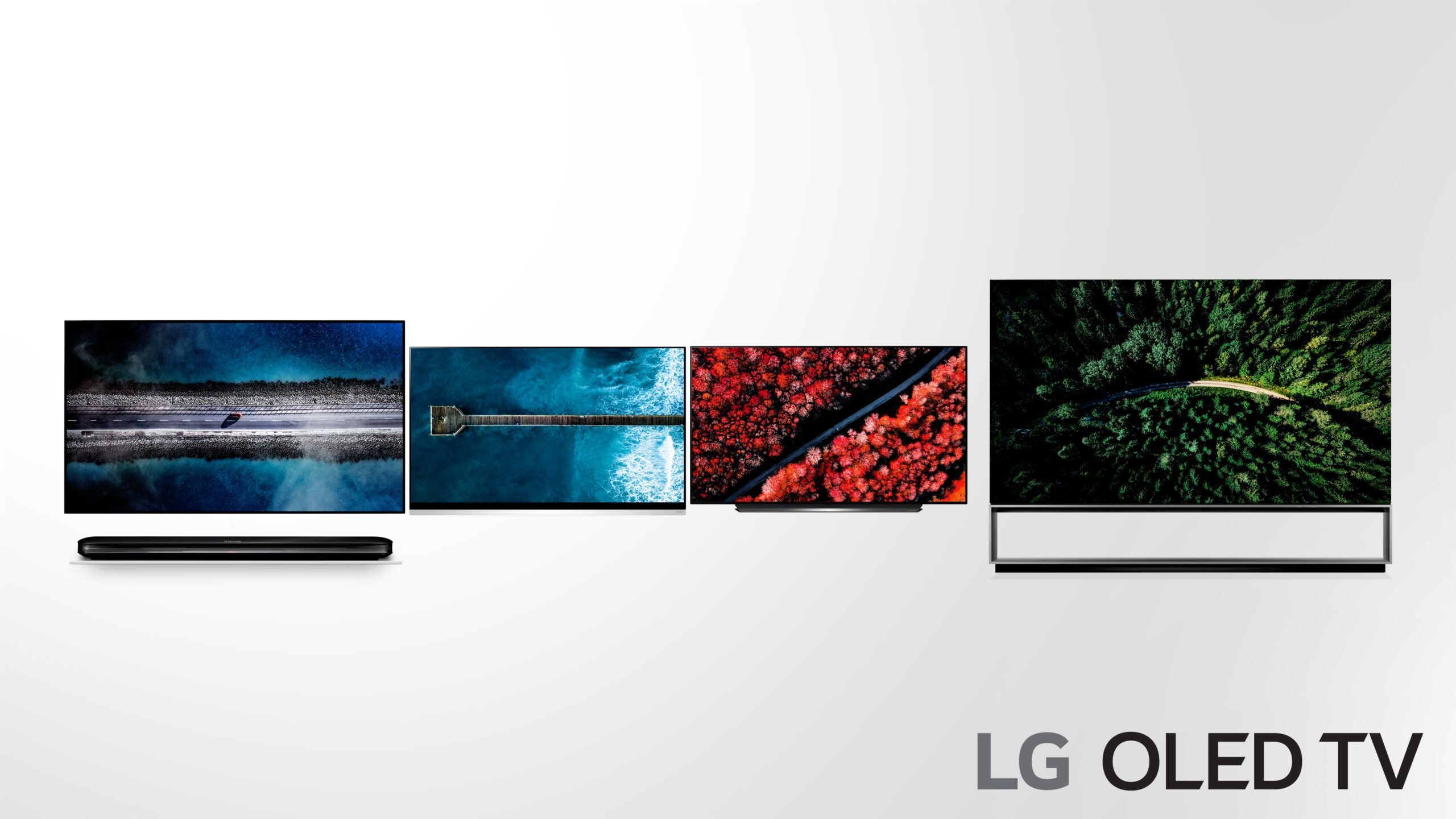 You might be used to seeing OLED TVs all over the place. That’s because of this past decade, during which LG opened the organic LED floodgates by introducing a commercial-sized OLED TV set. Sony had the first OLED TV back in 2007, but it’s wasn’t terribly large. LG’s innovation took a while to filter through to SA but it absolutely has. Now we can barely move for the bloody things. OLED is everywhere, from a smartphone screen to wristwatches to, yes, living rooms. And it really started here, in the decade that was.
You might be used to seeing OLED TVs all over the place. That’s because of this past decade, during which LG opened the organic LED floodgates by introducing a commercial-sized OLED TV set. Sony had the first OLED TV back in 2007, but it’s wasn’t terribly large. LG’s innovation took a while to filter through to SA but it absolutely has. Now we can barely move for the bloody things. OLED is everywhere, from a smartphone screen to wristwatches to, yes, living rooms. And it really started here, in the decade that was.
Raspberry Pi – 2012
 Some things spawn from strange places. The Raspberry Pi was intended as a teaching aid in the UK, to allow for the learning of coding and computing skills using very little money. The internet had other ideas. The initial batches sold out immediately as the world tried to buy up every one of the pocket-sized PCs. Stocks have been increased since but its popularity hasn’t really waned. Now you can pick up a teeny little mobo, CPU, RAM, with wireless modules and connectivity for the price of a pair of cheap-ish running shoes. You’ve still got to figure out what to do with it but since you can make anything from a media PC to a robot to an actual satellite, it’s earned its place on this list.
Some things spawn from strange places. The Raspberry Pi was intended as a teaching aid in the UK, to allow for the learning of coding and computing skills using very little money. The internet had other ideas. The initial batches sold out immediately as the world tried to buy up every one of the pocket-sized PCs. Stocks have been increased since but its popularity hasn’t really waned. Now you can pick up a teeny little mobo, CPU, RAM, with wireless modules and connectivity for the price of a pair of cheap-ish running shoes. You’ve still got to figure out what to do with it but since you can make anything from a media PC to a robot to an actual satellite, it’s earned its place on this list.
DJI Phantom – 2013
 Drones used to be a lot more mysterious. Before the Mavic came along and did everything for you, the Phantom was the drone to own. And, to give you an idea of how spoiled we are with our gimbals and 4K cameras, back in the day you had to supply your own camera. Yup, you were strapping a GoPro in and hoping to get your shots done within your ten-minute flight window before having to swap out batteries and get into position for the next shot. The Phantom spawned a long line of other drones in the family, right up until 2016. Now, though, it’s Mavic all the way for drone pilots. Or you could opt for something a little bigger if you have your pilot’s license and some very expensive camera kit.
Drones used to be a lot more mysterious. Before the Mavic came along and did everything for you, the Phantom was the drone to own. And, to give you an idea of how spoiled we are with our gimbals and 4K cameras, back in the day you had to supply your own camera. Yup, you were strapping a GoPro in and hoping to get your shots done within your ten-minute flight window before having to swap out batteries and get into position for the next shot. The Phantom spawned a long line of other drones in the family, right up until 2016. Now, though, it’s Mavic all the way for drone pilots. Or you could opt for something a little bigger if you have your pilot’s license and some very expensive camera kit.
Boston Dynamics Atlas – 2013
 We’ve been waking Atlas play for a long time. Boston Dynamics’ bipedal robot doesn’t have the cutesy appeal of its Cheetah or lil robo-doggos but we’ve seen Atlas progress from pacing in a laboratory treadmill to running about (while tethered) to being kicked about to… well, to doing parkour and gymnastics. He’s also gone for a jog or two outside in the interim. Why’s all this important? Well, bipedal is perhaps the most difficult mode of operation for a robot. If Atlas has come this far, how effective are those quadrupeds and spider bots really?
We’ve been waking Atlas play for a long time. Boston Dynamics’ bipedal robot doesn’t have the cutesy appeal of its Cheetah or lil robo-doggos but we’ve seen Atlas progress from pacing in a laboratory treadmill to running about (while tethered) to being kicked about to… well, to doing parkour and gymnastics. He’s also gone for a jog or two outside in the interim. Why’s all this important? Well, bipedal is perhaps the most difficult mode of operation for a robot. If Atlas has come this far, how effective are those quadrupeds and spider bots really?
Google Glass – 2013
 Where were you when the word Glasshole was invented? That’s the derogatory name given to users of Google’s Glass, a now largely defunct commercial product that lives on in the search company’s Enterprise edition. The concept remains an attractive one — an augmented reality headset not dissimilar to a Scouter from Dragon Ball Z. It was supposed to give us all broader access to a connected world, without having to resort to silly little things like interfaces. The idea failed because we’re a couple of tech-trees short of a Minority Report-like future where you can control virtual worlds by waving your hands and speaking to a teeny computer. Still…
Where were you when the word Glasshole was invented? That’s the derogatory name given to users of Google’s Glass, a now largely defunct commercial product that lives on in the search company’s Enterprise edition. The concept remains an attractive one — an augmented reality headset not dissimilar to a Scouter from Dragon Ball Z. It was supposed to give us all broader access to a connected world, without having to resort to silly little things like interfaces. The idea failed because we’re a couple of tech-trees short of a Minority Report-like future where you can control virtual worlds by waving your hands and speaking to a teeny computer. Still…
Fitbit Flex – 2013

Fitness trackers have come a long way in not much time at all. The one that started it all, for the Stuff team at least, was 2013’s Fitbit Flex, a nondescript little wrist-based tracker consisting of an ovoid bit of plastic with a few LEDs and a proprietary charger. The trackers have become more complex, leading to smartwatches, hybrid devices and hyper-specific trackers as well, but the proprietary chargers? Yeah, those seem to have stuck around. If only they wouldn’t change the damned thing every time a new range lands, you know?
Nokia Lumia 1020 – 2013
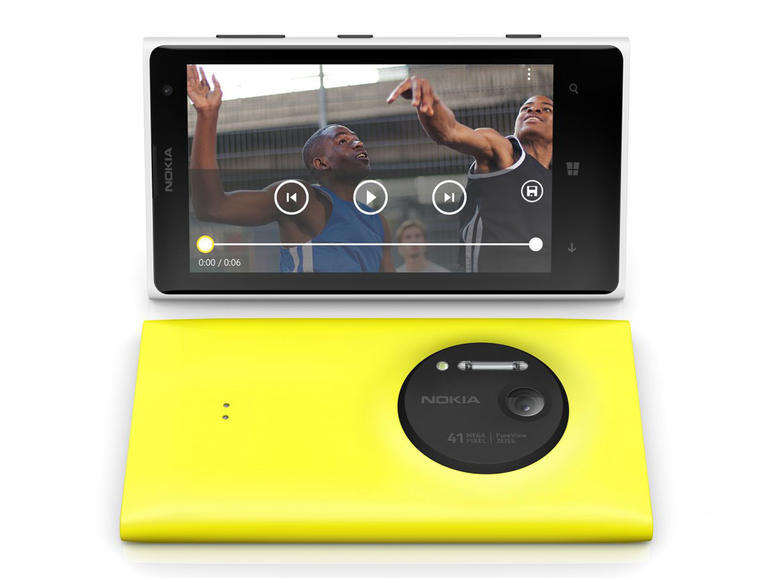 You might remember this one — before Nokia’s Microsoft partnership blew up in the company’s face, taking the brand down with it (for a while), we had the Lumia 1020. Most notably seen in yellow, the slick Windows Phone 8-toting hardware had something very unusual in its specs list — a 41MP camera. It had a bunch of other cool features too, including some not-that-bad specs, but it was the camera that made this one stand out. Unless you had the yellow one, then it also stood out cos of that.
You might remember this one — before Nokia’s Microsoft partnership blew up in the company’s face, taking the brand down with it (for a while), we had the Lumia 1020. Most notably seen in yellow, the slick Windows Phone 8-toting hardware had something very unusual in its specs list — a 41MP camera. It had a bunch of other cool features too, including some not-that-bad specs, but it was the camera that made this one stand out. Unless you had the yellow one, then it also stood out cos of that.
Pebble Watch – 2013
 An advert for the joys of crowdfunding, the Pebble was a great example of both user-backed and wearable tech. The original smartwatch, the Pebble used an e-ink display and offered on-wrist notifications to users. It also had downloadable apps, supported Bluetooth (obvs.) and was waterproof — features that didn’t turn up in mass-market devices for quite some time afterwards. The Pebble also spawned the Pebble Time, which featured a coloured display, before the company folded. Its assets were sold to Fitbit, which now belongs to Google. So there’s that.
An advert for the joys of crowdfunding, the Pebble was a great example of both user-backed and wearable tech. The original smartwatch, the Pebble used an e-ink display and offered on-wrist notifications to users. It also had downloadable apps, supported Bluetooth (obvs.) and was waterproof — features that didn’t turn up in mass-market devices for quite some time afterwards. The Pebble also spawned the Pebble Time, which featured a coloured display, before the company folded. Its assets were sold to Fitbit, which now belongs to Google. So there’s that.
Apple MacBook Air – 2013

There was some argument in the office about which Apple MacBook Air to use for this list. We were keen on the original, that famously came out of an envelope on stage, but that doesn’t fit into this decade. But since we still have a (functional and in use) 2013 MacBook Air kicking around the office, we settled on this one. The reason isn’t hard to see. Apple’s hardware and design reached a high point with the 2013 Air and it’s mostly been a case of design refinement and spec upgrade in the range. Plus a few other colour options have been added since.
GoPro Hero Session – 2015
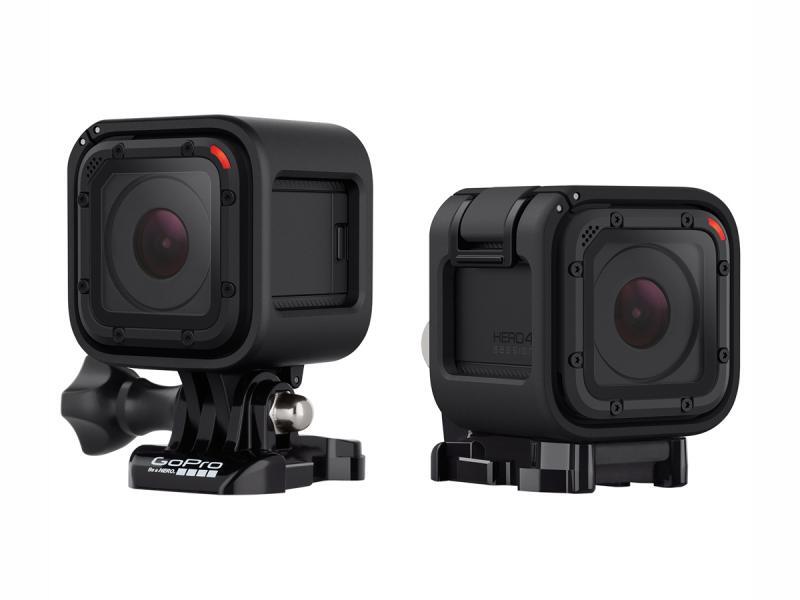 Having to pick an iconic GoPro from the past decade was a mission. There’s a reason that every action cam on the planet is referred to as a GoPro, after all. In the end, we opted for the Session. Why? Well, it’s small, versatile and was the first of the company’s action cams to be completely waterproof without a housing — a feature that since passed on to every device in the company’s stable. This was the point where GoPro cameras went from needing all manner of extra protection to being more rugged and even more useful. This year, GoPro even tucked the mount point away in the camera body for the GoPro Hero8 but those changes started here.
Having to pick an iconic GoPro from the past decade was a mission. There’s a reason that every action cam on the planet is referred to as a GoPro, after all. In the end, we opted for the Session. Why? Well, it’s small, versatile and was the first of the company’s action cams to be completely waterproof without a housing — a feature that since passed on to every device in the company’s stable. This was the point where GoPro cameras went from needing all manner of extra protection to being more rugged and even more useful. This year, GoPro even tucked the mount point away in the camera body for the GoPro Hero8 but those changes started here.
Apple Airpods – 2016
 Apple’s Airpods are here for a few reasons. One: they’re… pretty cool. Everyone and their brother now has a pair of wireless earbuds on the market, and that was AFTER we made fun of these. To be fair, the Airpods immediately had a ‘string’ accessory to link them together at launch. Two: Well, this is where the smartphone 3.5mm headphone jack started going away. It hasn’t returned to Apple phones and the likes of Samsung and co. are now finally following suit.
Apple’s Airpods are here for a few reasons. One: they’re… pretty cool. Everyone and their brother now has a pair of wireless earbuds on the market, and that was AFTER we made fun of these. To be fair, the Airpods immediately had a ‘string’ accessory to link them together at launch. Two: Well, this is where the smartphone 3.5mm headphone jack started going away. It hasn’t returned to Apple phones and the likes of Samsung and co. are now finally following suit.
Google Assistant – 2016
 What can we say about the Google Assistant? Well, now it’s everywhere. In 2016, though, it lived inside Google’s Allo app, which hasn’t aged quite as well as the search company’s digital helper. Assistant now lives inside your Android handset (say ‘Hey Google’ or ‘Okay Google’) as well as the excellent range of Google Home or Google Nest range of smart home devices. Its ability to parse human language seems to be steadily improving but we’d be happier if it was just a touch more useful. Still… Assistant may have turned up this decade but we think by the end of the next one, it’s going to be a very different beast.
What can we say about the Google Assistant? Well, now it’s everywhere. In 2016, though, it lived inside Google’s Allo app, which hasn’t aged quite as well as the search company’s digital helper. Assistant now lives inside your Android handset (say ‘Hey Google’ or ‘Okay Google’) as well as the excellent range of Google Home or Google Nest range of smart home devices. Its ability to parse human language seems to be steadily improving but we’d be happier if it was just a touch more useful. Still… Assistant may have turned up this decade but we think by the end of the next one, it’s going to be a very different beast.
Samsung Galaxy Note 7 – 2016
 Ah, Samsung’s Galaxy Note 7 — the smartphone that Samsung would prefer you forgot. Well, we didn’t forget, Samsung. This phone’s notable for a few reasons but mostly because it went boom. You might remember that Samsung recalled the whole product lineup from around the world, attempted to fix and re-release the phone and then eventually packed it in and went back to designing the excellent Galaxy S8 and friends. The Galaxy Note 7 recall could have done Samsung some major damage but the company handled the catastrophe extremely well, coming back bigger and better than ever. See, Samsung? We didn’t forget that either.
Ah, Samsung’s Galaxy Note 7 — the smartphone that Samsung would prefer you forgot. Well, we didn’t forget, Samsung. This phone’s notable for a few reasons but mostly because it went boom. You might remember that Samsung recalled the whole product lineup from around the world, attempted to fix and re-release the phone and then eventually packed it in and went back to designing the excellent Galaxy S8 and friends. The Galaxy Note 7 recall could have done Samsung some major damage but the company handled the catastrophe extremely well, coming back bigger and better than ever. See, Samsung? We didn’t forget that either.
Nintendo Switch – 2017
 The Nintendo Switch had very few believers before its 2017 launch. And then folks actually got their hands on it. Overnight the convertible gaming console and its impressive launch titles catapulted Ninty right back to the forefront of gaming. The hardware was never going to test Sony and Microsoft’s walls but it didn’t have to. Excellent games, an interesting form factor, a range of cardboard peripherals and a continuing stream of high-quality titles have made the Switch a force to be reckoned with. Not bad for a console that nobody thought stood a chance just two years ago.
The Nintendo Switch had very few believers before its 2017 launch. And then folks actually got their hands on it. Overnight the convertible gaming console and its impressive launch titles catapulted Ninty right back to the forefront of gaming. The hardware was never going to test Sony and Microsoft’s walls but it didn’t have to. Excellent games, an interesting form factor, a range of cardboard peripherals and a continuing stream of high-quality titles have made the Switch a force to be reckoned with. Not bad for a console that nobody thought stood a chance just two years ago.
SpaceX Falcon Heavy – 2018
 It’s been a while since we got madly excited over rocket launches. SpaceX does them (and lands the boosters) enough that we kinda got over our Grasshopper excitement this decade. Until the Falcon Heavy launch, that is. The test launch for SpaceX’s heavy lifting platform was a thrill in itself but the fact that it was launching Elon Musk’s Tesla Roadster (and Starman) out past Mars gave it that little something extra. Add to that the synchronised dual booster landing on the day — which was almost the highlight of the whole thing — and we can easily forgive the company for not nailing the third landing.
It’s been a while since we got madly excited over rocket launches. SpaceX does them (and lands the boosters) enough that we kinda got over our Grasshopper excitement this decade. Until the Falcon Heavy launch, that is. The test launch for SpaceX’s heavy lifting platform was a thrill in itself but the fact that it was launching Elon Musk’s Tesla Roadster (and Starman) out past Mars gave it that little something extra. Add to that the synchronised dual booster landing on the day — which was almost the highlight of the whole thing — and we can easily forgive the company for not nailing the third landing.
Huawei Mate 30 – 2019
 Yes, we’re closing this list with a device that hasn’t been seen much in South Africa. Samsung had to contend with the Galaxy Note 7 and the Mate 30 (plus the Pro variants) are Huawei’s particular cross to bear. The company’s had to deal with trade disagreements and a complete lack of Android — a feature that, honestly, allows its excellent hardware to sell in the numbers it does in western countries. How will Huawei, as a smartphone maker, look in the decade starting in 2020? That’s a question that probably won’t find an answer before the end of this decade. As with everything, the future holds the answers. Stick around, there’s another decade in tech starting shortly.
Yes, we’re closing this list with a device that hasn’t been seen much in South Africa. Samsung had to contend with the Galaxy Note 7 and the Mate 30 (plus the Pro variants) are Huawei’s particular cross to bear. The company’s had to deal with trade disagreements and a complete lack of Android — a feature that, honestly, allows its excellent hardware to sell in the numbers it does in western countries. How will Huawei, as a smartphone maker, look in the decade starting in 2020? That’s a question that probably won’t find an answer before the end of this decade. As with everything, the future holds the answers. Stick around, there’s another decade in tech starting shortly.
Brought to you by Incredible Connection. For the next decade of iconic tech, visit any of the more than 80 Incredible Connection stores around the country where you’ll find everything you could possibly want. At Incredible, the list of awesome tech isn’t just restricted to the greatest hits – though those are certainly here. Fitness tech and wearables, camera and photography accessories, software, networking, smart home, software, office equipment and entertainment gadgets all have a home at Incredible Connection. Where they patiently wait before heading on to their new homes. To your home, at the end of the day. Whether it’s the latest round of smartphones, computers, notebooks and all the accessories that go with it or the best gaming and gear in the country, you’ll find it all in one place at an always excellent price.
Welcome to Incredible Connection. Live Connected.

